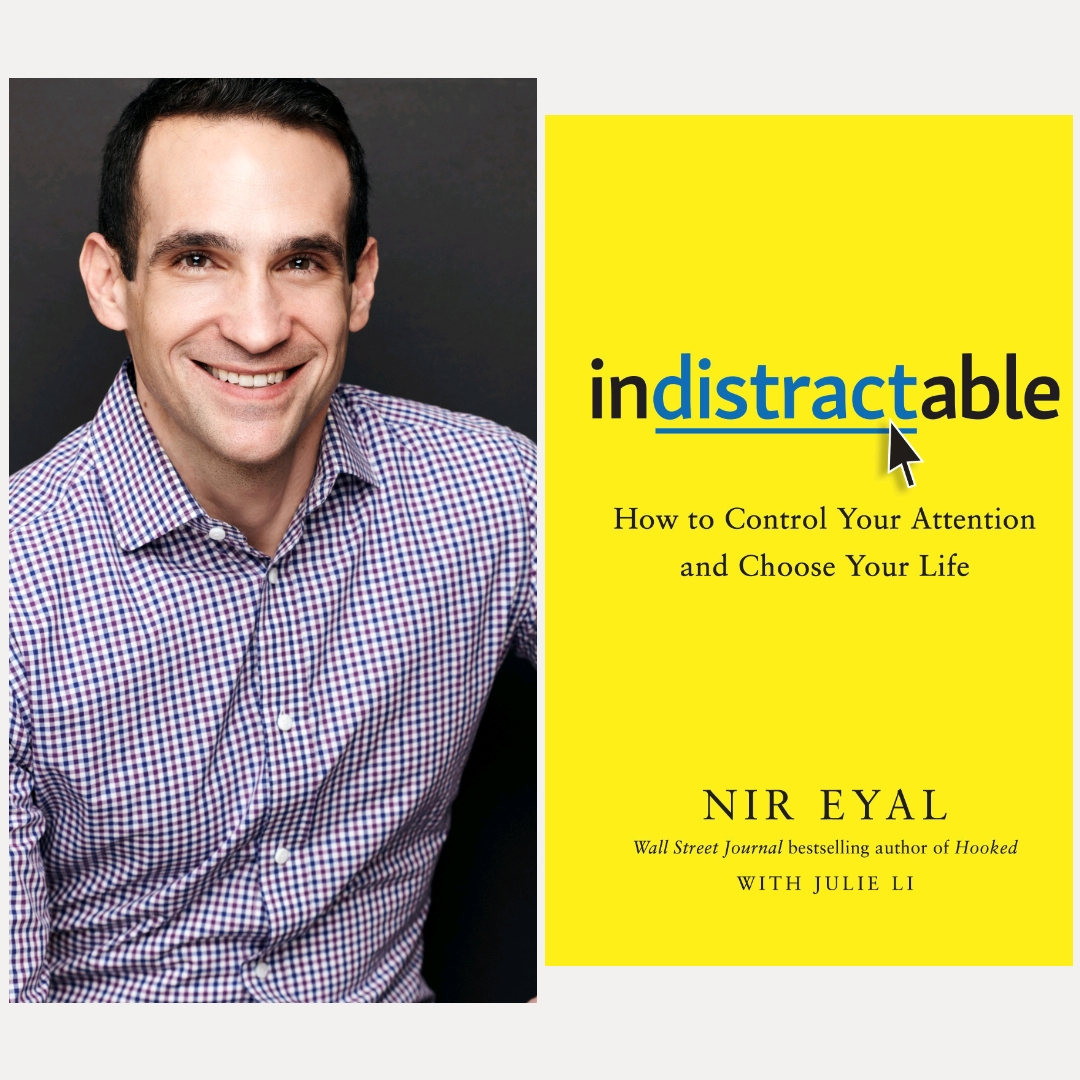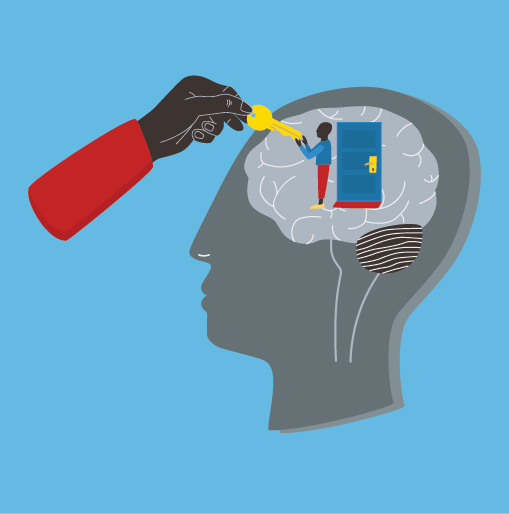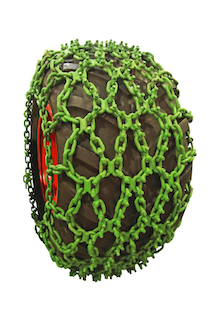Becoming Indistractable


Book Recommendation – Indistractable by Nir Eyal
Most appraisers are on the road a lot. I understand the need to stay engaged while driving. My go-to in my car is to listen to podcasts and audiobooks. (Along with the occasional baseball game if I can find one.)
A few weeks ago, I came across Indistractable by Nir Eyal. It’s a book with practical tips on how to be more present. He also spends a lot of time talking about putting our phones down. I love the irony of listening to that on my phone. And it’s not lost on him either.
A short background on Nir
In case you’re wondering who Nir Eyal is, here’s a short bio. You can learn all about him at his website: nirandfar.com.
Nir is an expert in behavioral design. He has been a lecturer at the Stanford Graduate School of Business. As an entrepreneur, he founded and sold two tech companies. And more recently, he has started writing books. His first book, Hooked: How to Build Habit-Forming Products is a mainstay in the business world. Indistractable: How to Control Your Attention and Choose Your Life was a bit of a reaction to the methods in Hooked.
As you might have guessed, Indistractable focuses on getting rid of distractions to follow through on your intentions. I feel like that’s something we could all use.
One of the reasons I recommend Indistractable is because it contains doable suggestions. Too many of this type of book get too “touchy-feely” for me, and I lose interest…fast.
Another reason is that Nir uses casual language and relatable examples. Who among us has never missed what someone said because we checked our phone? And how many times has checking your phone taken you down a rabbit hole? I know it happens to me, and I bet it happens to most of us.

The Four Strategies to Become Indistractable
Nir’s strategies focus on four key areas.
- Mastering internal triggers
- Making time for traction
- Hacking back external triggers
- Preventing distraction with pacts
I’ll briefly discuss these key areas and give a few examples.
Mastering Internal Triggers
Drawing from psychology, Nir argues that we allow ourselves to become distracted to avoid discomfort. And we create habits from actions that provide relief. If we look at the real reasons we spend time distracting ourselves, we can change them.

To become indistractable, we must find the cause of the distraction and overcome it.
Eyal tells the story of Zoe Chance, a marketing professor who got hooked using a pedometer (of all things). She realized later that she used it to distract herself from a difficult time in her life. Her experience led her to this powerful realization.
Most people don’t want to acknowledge the uncomfortable truth that distraction is always an unhealthy escape from reality. How we deal with uncomfortable internal triggers determines whether we pursue healthy acts of traction or self-defeating distraction.
Think of that. Even walking with a pedometer can become a distraction. And it can lead to insights about ourselves.
Becoming indistractable doesn’t mean we’ll get rid of discomfort. Discomfort has a basis in evolution. If we didn’t feel dissatisfaction, we wouldn’t seek accomplishments.
We can manage distractions by putting a different spin on internal triggers. Instead of beating ourselves up for giving in to distraction, learning to acknowledge it and move on can be freeing.
Counterintuitively, resisting an urge can make the desire to give in stronger. And it can turn into a vicious cycle. Fyodor Dostoyevsky, the author of Anna Karenina among other books, illustrates this point.
Try to pose for yourself this task: not to think of a polar bear, and you will see that cursed thing will come to mind every minute.
Eyal reveals four steps to manage disruptive or intrusive thoughts.
- Look for the emotion preceding distraction
- Write down the internal trigger
- Explore the negative sensation with curiosity instead of contempt
- Be cautious during liminal moments
Making Time for Traction
Think about the person you want to be. Do you follow through on your commitments? Do you make time for the people and things that are important to you? Becoming who you want to be is what traction is all about.
Eyal encourages us to make time. He champions a method called “timeboxing.”

In its simplest form, timeboxing helps us plan our time and entering it into a calendar. With timeboxing, you assign a certain amount of time to a task and complete the responsibility within the time you set aside. One of the recommendations is that you make the time visual. (This will resonate with anyone who has a collection of highlighters.) By visualizing the time blocks, you can see all you schedule with a glance.
Your schedule becomes sacrosanct. Once you enter something on your calendar, you must do it.
A practical example is setting aside time for communicating with others. You’ve heard of scheduling time throughout the day to check emails. Timeboxing recommends that you schedule time each day to check your email. Outside of those times, you don’t check your email.
It takes self-discipline to keep to your schedule. But don’t worry, you can review and revise your plan. Although, you should stick to your schedule once you have it locked in.
Hacking Back External Triggers
Ask yourself about the last time your phone beeped. Was it something that you needed or something extra? If it was something you needed, it was serving you. If not, you were serving it.
One of the problems with our smartphones is that manufacturers and app creators are good at getting our attention. One of the most insidious inventions is the notification center. Think back to Dr. Chance. One of the reasons she became engrossed with her pedometer was its push alerts. Each time she got one, she felt pressure to get a few more steps.
Eyal advises us to
- Uninstall apps you haven’t used in some time
- Shift potentially distracting apps from your phone to your desktop
- Move apps you check mindlessly away from your home screen
- Change the notification settings for each app
Preventing Distraction with Pacts
This advanced technique works best after you’ve implemented the other three strategies.

Pre-commitments can keep you from being distracted by removing a future choice. The three kinds of pre-commitment you can use to build traction are
- Effort pacts;
- Price pacts; and
- Identity pacts.
Effort pacts help you stay engaged by making behavior more complex, for example, by placing your alarm clock across your bedroom so you can’t hit Snooze without getting out of bed.
Alternatively, price pacts place a monetary cost on your commitment. If you don’t make a change, you lose money. You can add even more pressure by committing to give money to a cause you disagree with.
Price pacts may not always be worth it. Use these guidelines before you agree to start.
- Price pacts aren’t a good option for behavior with external triggers you can’t escape. Don’t commit to stop biting your fingernails unless you plan on getting rid of your fingers.
- Price pacts should only be used for short tasks.
- Entering a price pact can be scary. The amount should keep you motivated but not put you at risk of becoming destitute.
Identity pacts are clever agreements you make with yourself. In psychology, identity is a powerful force. By labeling yourself with the identity, you can prime yourself to act. For example, if your goal is to get in shape, label yourself as an athlete. One of the prerequisites for most athletes is to be fit. By saying “I’m an athlete,” you start changing your self-image.
Eyal is on to something with becoming “Indistractable.” By removing distractions, you can make the most of your relationships and opportunities. And you’ll ultimately find more control in your life.
If you want to learn more about Nir Eyal, visit www.nirandfar.com.


